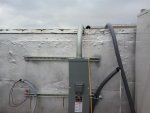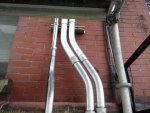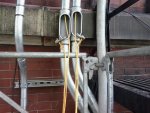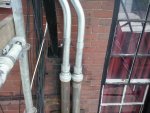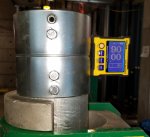Danny89
Member
- Location
- Indian Land
Hello guys I'm fairly new at bending emt for offsets and such.
I use the following rules.
10 degree bends equals multiple of 6
22.5 degree bends equals multiple of 2.6
30 degree bends equals multiple of 2.
So this weekend I bought a klien bender bought some 5 foot sticks of 3/4 pipe and tried my hand at multiple offset bends.
Problem I was having was I would always end up with a level offset but 3/4 of an inch too much of a bend. Why does this happen am I putting too much of a bend in it or am I putting too little of a bend in it?
Everytime I do the math for for the distance between my marks. I mark the pipe bend it at the desired line on the bender(30degrees) flip it 180 degrees and bend at second mark...
How do I fix this and become consistent with exactly what I want instead of 3/4 inches higher than I want to be with my offset?
Sent from my Moto Z (2) using Tapatalk
I use the following rules.
10 degree bends equals multiple of 6
22.5 degree bends equals multiple of 2.6
30 degree bends equals multiple of 2.
So this weekend I bought a klien bender bought some 5 foot sticks of 3/4 pipe and tried my hand at multiple offset bends.
Problem I was having was I would always end up with a level offset but 3/4 of an inch too much of a bend. Why does this happen am I putting too much of a bend in it or am I putting too little of a bend in it?
Everytime I do the math for for the distance between my marks. I mark the pipe bend it at the desired line on the bender(30degrees) flip it 180 degrees and bend at second mark...
How do I fix this and become consistent with exactly what I want instead of 3/4 inches higher than I want to be with my offset?
Sent from my Moto Z (2) using Tapatalk




